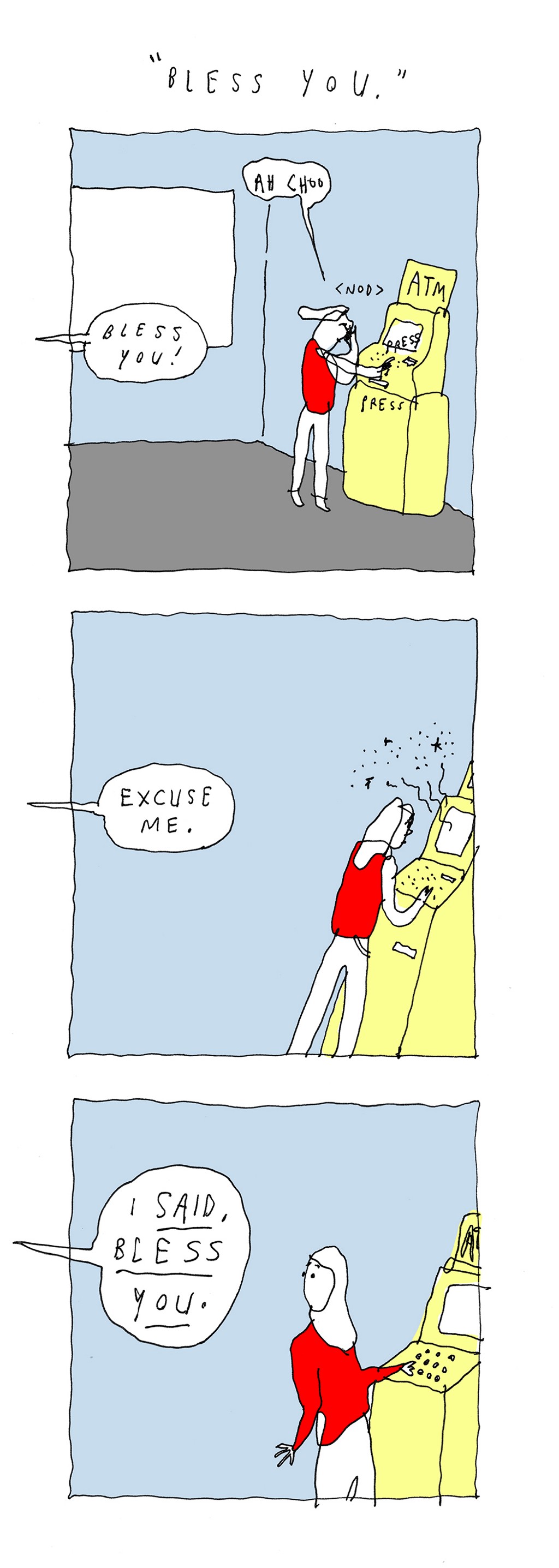New York City, September 7, 2016

★★★ Well before midday, the brooding gray from daybreak was scattered and gone. The sun was summer-hot on the way to the hot dog stand for the children’s last lunch of vacation. The blue of the younger boy’s t-shirt stretched and flowed along the glossy side panels of a slowly turning moving van. Indoors the air conditioner could almost be left off, but there as no other way to get rid of that last increment of discomfort. At Times Square, sweltering air kept spilling into the 1 train car as the doors kept jerking open when they were supposed to close. The afternoon stayed hot even in the intervals when the clouds returned. When the clouds left, the clear returning light justified all the effort the builders had put into the cornices.
Only You Can Prevent Forests
Take it all, wilderness!

So, what’s happening in nature?
“Humans have destroyed a tenth of Earth’s remaining wilderness in the last 25 years and there may be none left within a century if trends continue, according to an authoritative new study. Researchers found a vast area the size of two Alaskas — 3.3m square kilometres — had been tarnished by human activities between 1993 and today, which experts said was a ‘shockingly bad’ and ‘profoundly large number’.”
Yes, there’s more:
Humans have destroyed a tenth of Earth’s wilderness in 25 years – study
I don’t want to sound a pessimistic note here but isn’t it time we stop pretending that there’s some way we can fix this? Even if the political will existed to support a legitimate effort, which it does not (and, given the way things are structured, probably never will with the degree of unanimity necessary to actually make some sort of difference), we are already too far gone for some sort of miracle reversal to occur. I always have to laugh when people suggest that human ingenuity might provide a solution. Human ingenuity is what got us into this mess in the first place! The worst thing that ever happened to this planet is human ingenuity. We’re fucked and that’s all there is to it. If you have kids I suggest you take them on a trip to show them what’s left as soon as possible, and then teach them how to run long distances very fast. They’ll always have the memories, and the training will come in handy a few years down the road when life consists mainly of racing away from fires.
A Poem by Alex Dimitrov
Jesus in Hollywood
It’s three days past Easter and at the light on Fountain
one car behind me is Jesus. He’s driving a white BMW
and he is alone. I drive slow and keep an eye on the mirror
wondering if I’m the only one who sees him,
making a list of the awful things I’ve done
this year, should he pull me over.
Jesus, I abandoned my longest relationship
and wasn’t sorry. Not sure I am now.
I stopped talking to my mother
then started (and stopped again after),
so these days I’m not sure who’s talking to whom
even when we are screaming or silent.
Like you, I kept coming back to Hollywood.
I wanted to believe in life after death
and if it’s true anywhere — surely then — here.
I tried to be alone and with people
and both almost killed me.
Then I almost killed me:
drinking in a bungalow in Venice (July),
reading the tabloids and Milton,
buying myself two hours with another bottle of wine
then buying myself more with a book
even longer than Paradise Lost.
Jesus, they probably think you are glamorous.
Look at the car you’re driving. It’s a beautiful rental.
You should stay in your price range.
They probably think you are lucky and set.
Maybe too young and mysterious. Just imagine.
Who wouldn’t let you in if you knocked on his door?
And who wouldn’t cry with you
in a parking lot outside any American mall?
Do you even cry, Jesus? Do you even pay rent?
Would you live in the world that we do?
Or do you just like to drive, see the sights,
keep your sunglasses on, keep the real you inside:
a white BMW on Fountain. Or wherever it is we are now,
I’m going to let you pass me.
I’m not going to follow you, Jesus.
I’m going back to the sun and the people,
back where I never belonged.
Alex Dimitrov is the author of Together and by Ourselves (Copper Canyon Press, 2017), Begging for It (Four Way Books, 2013), and the digital chapbook American Boys (2012). He lives in New York City.
The Poetry Section is edited by Mark Bibbins.
Serena Williams Is Not A Good Loser, So She Tries Not To Lose
Notes from her MasterClass on tennis
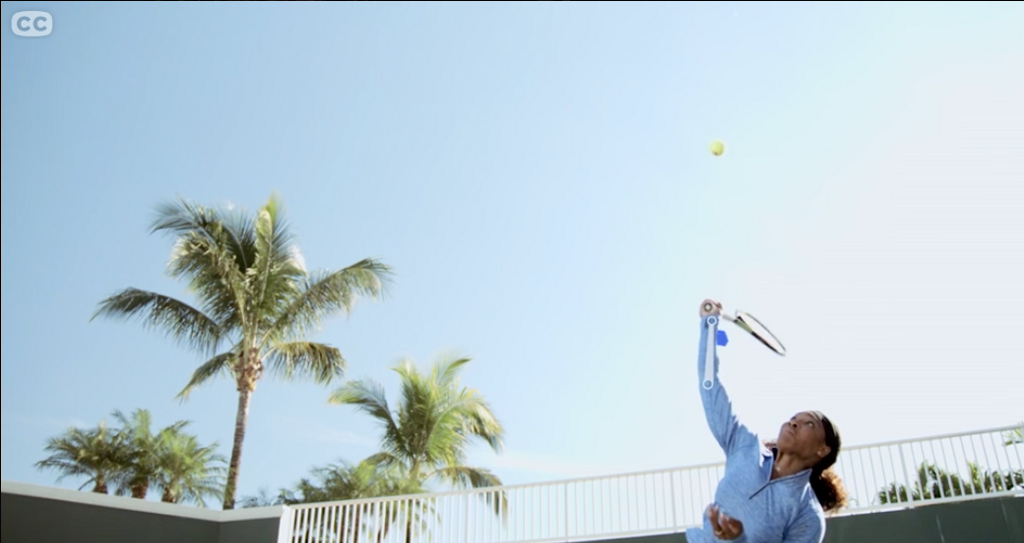
If you are a good enough natural athlete, you can pick up a football in college and eventually go pro, or start running triathlons in early adulthood and make the Olympics. Not so with tennis, a sport whose minute technical details are drilled into muscle fibers only through many, many, many, many, repetitions. The buzzkill of Serena Williams’s MasterClass, then, comes halfway through, in an episode titled “Training Like a Pro,” which begins with a clip of Serena and her sister Venus lazily riding their bikes as children. Only later do we learn that they are biking towards one of the two-a-day training sessions — 9 to 11 a.m., 1 to 6 p.m. — they withstood for much of their childhoods. Williams’s hours of training were not the only thing that made her successful, as hundreds of mildly-gifted Tylers and Shannons who bloodied their knuckles for hours a day under the tutelage of despotic parents only to become country-club pros, or, more likely, to give up the sport in disgust, can tell you. But her forty hours a week were a prerequisite.
Which is to say, if you are looking to become a world-class athlete as an adult, you might consider archery or curling. The good news about tennis is that you can get better with age, at least somewhat. I was a competitive high school tennis player who traveled to tournaments on a regional level, and I am happy to report that, even before watching Williams’s MasterClass, I could kick my eighteen-year old butt. Some of that comes from the fact that, at thirty, I have only just crested the peak of my natural athleticism, and am still digging my heels in as I slide down the other side. Most of it, however, is mental. It is amazing to realize as an adult that the things authority figures told you as a child — “It would really be easier to hit the ball if you looked at it” — actually work. Maintaining cool and composure, and having faith that everything’s going to be alright even if you miss the next ball, really do make the game easier.
So, if you’re looking for tips about split steps and open stances and the value of intensely watching your opponent’s serving toss, Serena’s MasterClass has plenty for you in varying levels of detail. (On the difficult of swinging across the body with both hands: “If [your opponents] have big chests, hit to their backhands.”) There’s also drills to improve various parts of your game. Is your two-handed backhand struggling? Serena recommends taking your right hand off the racket and trying to hit with your left. (Good news: video evidence suggests Williams is, in fact, a human-level left-handed tennis player.)
If you are struggling with consistency, Serena recommends a drill in which you try to keep the ball in play with your partner as long as possible, the consequence of missing being that the other person gets to, literally, beat you up. (Serena, with a smile: “As I you see I don’t have bruises.”)
For cardio, she likes dance classes; she takes yoga classes so she can perform better in her dance classes. What to eat? Fish and vegetables — “There are really great things out there available right now, including green drinks” — but no meat. Give yourself a Cheat Day, especially if you’re recovering from a big loss. “Usually what I do is go to a fast food restaurant and eat really bad and just really not think about it,” Williams said. She only watches footage from matches that she loses, and does so on mute. She never reads magazine articles about herself, but does cut out the pictures.
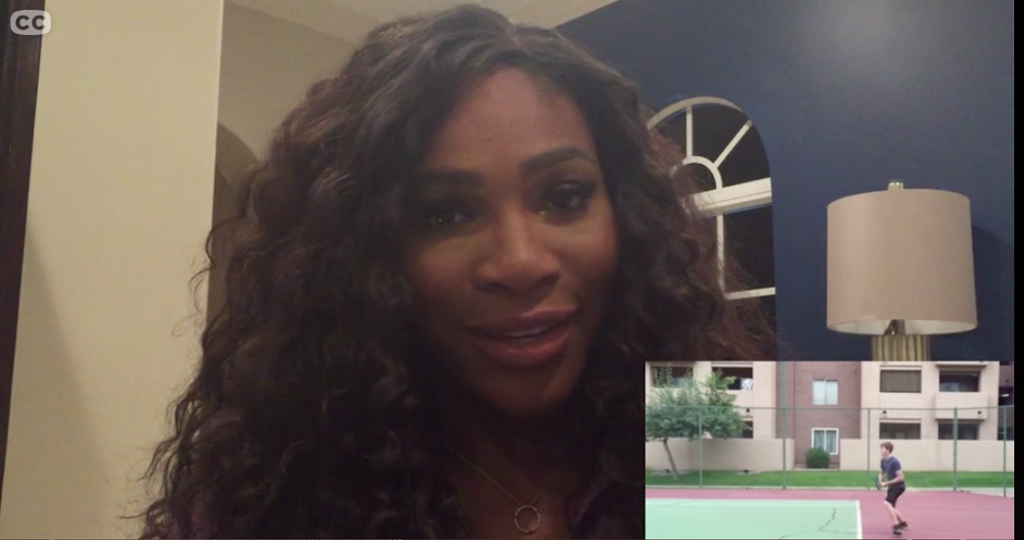
My favorite part of Serena’s MasterClass was “Office Hours,” in which she took questions — on recovering from a loss: “I’m not really a good loser so that’s why I try not to lose” — and, in a dozen or so cases, analyzed the forehands, backhands, and serves of my classmates brave enough to submit videos of themselves for her review, which could be blunt. (“Hey Rob, I just looked at your backhand. It looks a little rough.”) But when people buy lessons from famous athletes at charity auctions they are often looking less for insight into their games than, firstly, a chance to be in the athlete’s presence, and, secondly, some gossip—insight into their lives that are different from stories that get told over and over. We get some of that here.
Asked why she believes she was born to be a tennis player, Williams responded, “Because I’m not good at anything else, especially not relationships.” (Williams has been linked in the past to Common and Drake, and is now said to be dating Alexis Ohanian, the co-founder of Reddit.) Asked about how she motivates herself, she thought back to the 2010 Australian Open final, in which she had a strained thigh, a pair of bone bruises, and medical tape nearly from head to toe. She was struggling in the third set when she heard a spectator yell, “You don’t deserve to be No. 1.” Williams won the set 6–2.

The most enjoyable part of Serena’s Masterclass, for me, was a game I created called “Where’s Richard?,” in which my eyes would dart around the screen in order to catch the few fleeting glimpses of Serena’s father, a now largely hermetic figure who is credited with much of her success. There he was behind Serena as she hit groundstrokes:
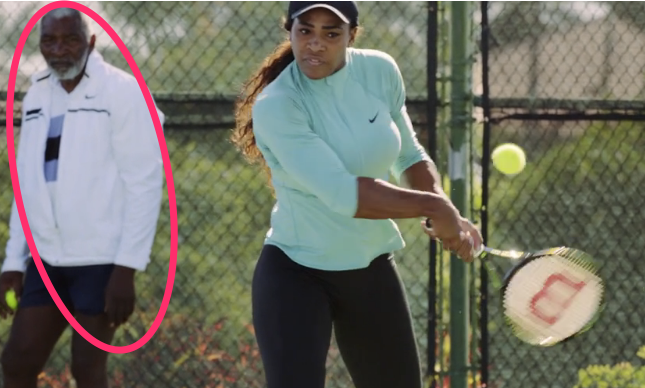
Or across the court, leaning on one of the oversized Pringles canisters tennis coaches use to pick up balls:
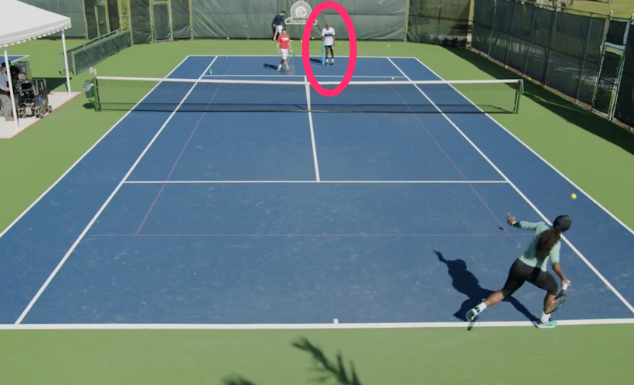
We never hear from Richard in the MasterClass’s ten episodes, but we hear a lot about him. When Serena relays tips, or suggests drills, they have often been handed down from her father; when she plays doubles with Venus, Serena says she can hear her dad’s voice spewing various training mantras that he had driven into their brains. Among his unusual tactics was to teach the sisters to throw all manner of balls — football, baseballs, medicine balls — because he believed it would increase their strength. “I can throw the ball just as far as any professional quarterback,” Williams said. I couldn’t find any digital evidence of Williams’s quarterbacking claim, but when she tossed out the first pitch at Yankee Stadium a few years back, she threw with enough power to send it sailing well over the catcher’s head.
It’s possible that Williams had just been nervous or afraid at Yankee Stadium, and that she made a power-for-accuracy calculation in order to follow the advice she gives for dealing with fear on the court: just start hitting the ball as hard as you possibly can. Technical info is something you can get from any sunburnt tennis pro, but what we really want from Serena is to get inside her head. In a certain respect this is the most comforting part of the course, because we get to learn that even Serena Williams, the greatest athlete of all time, is wracked by some variant of the same mental infirmities that pretty much everyone struggles with. “Being fearless is really crucial to having success,” she says. “But there are many times when I’m so afraid.”
Serena was the youngest of five, and did not develop confidence — in herself, in her body — until she was much older. Missing shots makes her so upset that when she gets angry on the court, she simply starts hitting the ball high over the net, with more room for error, until she calms back down. She often doesn’t eat before a match because she’s nervous, and her stomach can’t take it. “In the locker room, I have a lot of self-doubt,” Williams says, before noting that once she walks toward the court, her demeanor shifts. “The minute I put my bag on my back, my whole attitude completely changes.”

Here’s the piece that’s missing from Serena’s MasterClass: what is it that helps the world’s best athletes go from being the pile of emotions that sometimes envelop every human, to being steadfast and steely in the face of great stress? I have bad news, which is that the MasterClass offers no real advice on the subject. Instead, it ends by trying to return some control to the students. The last and longest episode in Serena’s MasterClass focuses on her serve, the weapon that has made her nearly impossible to beat for so many years. The chapter is the course’s most technically dense one, with tips on your toss, form, follow-through, and everything in between. Williams likes to serve, she says, because, “the serve I’m in control of.”
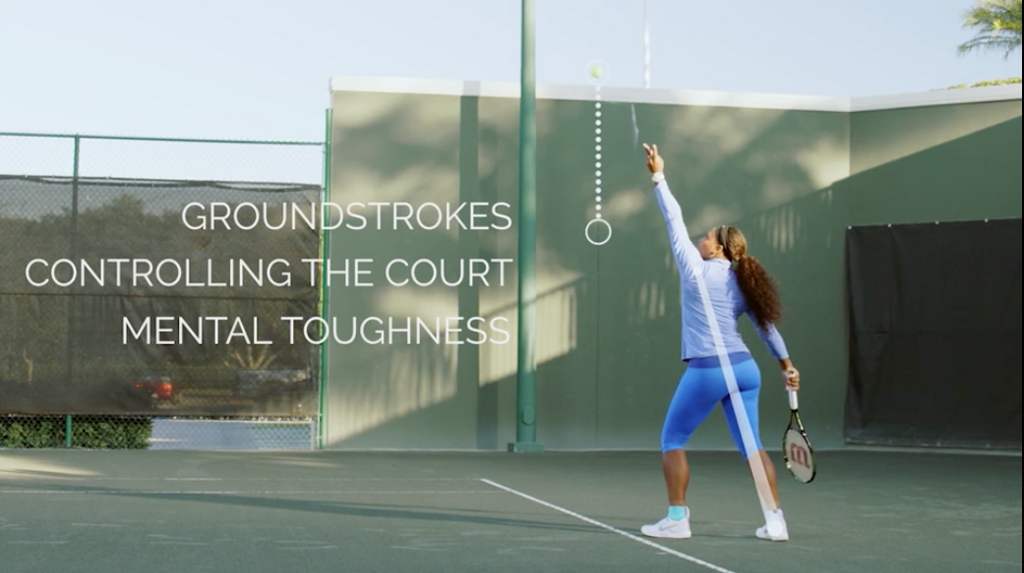
Everything else in a tennis match is subject to the whims of the player across the court, and can never be fully predicted. A tennis career can’t be predicted, either, and towards the end of the video, Williams addresses what is likely one of the larger demographics for the class — overbearing tennis parents looking to build a champion — by encouraging them to be loving and understanding toward their children in addition to being hardasses.
The only good news is that the greatest tennis player of all time finds calm amidst such unpredictability simply by reminding herself that, whenever she is feeling stressed, or the weight of potential history is falling upon her shoulders, or the world is asking her to do things no other athlete has ever done —that even at that highest level, Serena Williams comforts herself with the realization that, “In ten years, it’s not gonna really matter. No one’s gonna remember this match. And if so, they’re definitely not gonna be angry.”
Reeves Wiedeman is a contributing editor at New York magazine.
The Hill's 2016 50 Most Beautiful List, Assessed
A serious appraisal of the year’s most important journalism.

Yes, No, Yes, Yes, Yes, No, No, No, Yes, No, Yes, No, Yes, Yes, No, Yes, Yes, Yes, No, Yes, Yes, No, Yes, Yes, No, No, Yes, Yes, Yes, No, Yes, Yes, Yes, No, Yes, No, Yes, No, No, No, Yes, Yes, No, No, No, Yes, Yes, Yes, No, No
Now People Will Know For Certain That You're Ignoring Them On Twitter
The one thing we’ve wanted more than anything else!
Did you see this?
New! Direct Messages are more dynamic than ever with read receipts, typing indicators, and web link previews. https://t.co/VEU92V5Gqj
Okay, did you see this?
Go to https://t.co/wLfBy9IcM5 to turn off read receipts in DMs
You’re welcome. I wish every other problem in life were so easy to solve.
The Best Presidential Insult Nicknames
Uncle Cornpone, President de Facto, and Big Lub
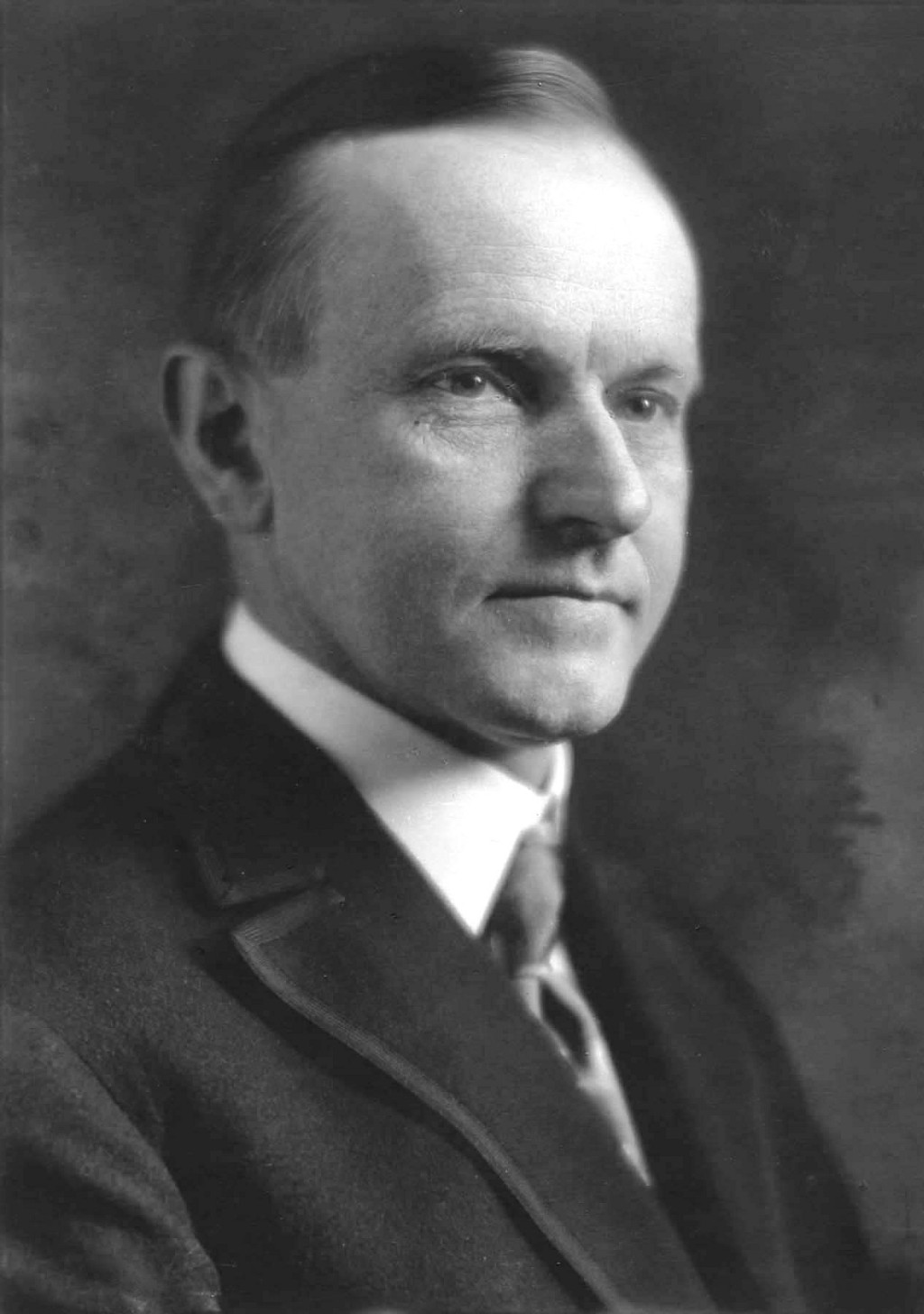
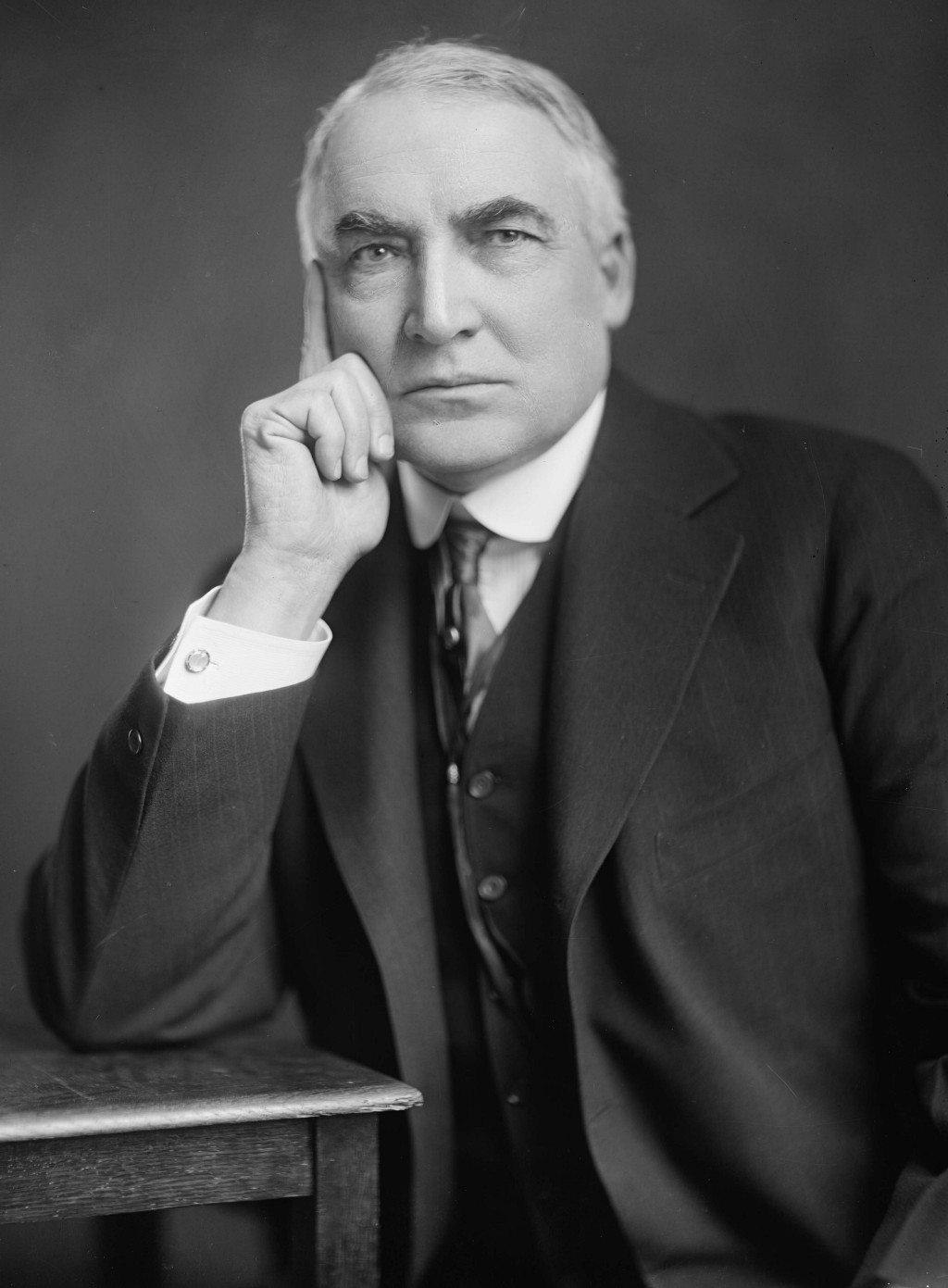
In the current U.S. presidential contest, Donald Trump has often seemed more enthusiastic about launching the nickname “Crooked Hillary” than attaining the office for which he’s nominally running. Thus it seems likely that (1) Hillary will win, and (2) the moniker’s going to stick. Sure, Crooked Hillary sounds almost dignified, like she might walk a crooked mile and adopt a crooked cat. But how does it compare to past presidential insult nicknames, from the pungent (Bullshit Johnson) to the sublime (Grandfather’s Hat)?
People loved mocking Grover Cleveland, but mostly let Millard Fillmore off the hook; whoever came up with “Old Granny” for Rutherford B. Hayes (our 19th president) was probably annoyed not to have coined it for Ulysses S. Grant (#18); Thomas Jefferson is spinning in his grave because he didn’t think to call out John Adams’s cankles.
All these nicknames are in the historical record. Pretty much any of them, you can google the nickname and the president’s real name and get more information. The only one that has an element of hearsay to it is the fairly mild “The Ripper” for Reagan, which I found in a book that’s referencing a newspaper column that quotes an anonymous insider White House source. The rest of them, you can find in old newspaper editorials, political cartoons, personal letters, and opposition campaign ads. (Sometimes not opposition. “Mutton Head” was what Vice President John Adams called President George Washington when they disagreed.)
Although it shows up in plenty of secondary sources, I could not find an original citation for “Machiavellian Belshazzar.” I’ve nevertheless included it, for obvious reasons. If you’re a Van Buren scholar, I’d welcome your insight in the comments.
Presidential Insult Nicknames, by Category:
Fat Jokes:
- His Rotundity (John Adams, #2)
- Uncle Jumbo (Grover Cleveland, #22)
- The Stuffed Prophet (still Grover Cleveland)
- Big Lub (William Howard Taft, #27)
- Dutch (Ronald Reagan, #40, from “fat little Dutchboy”)
Short Jokes:
- Little Jemmy (James Madison, #4)
- Short Stack (James Madison again)
- His Little Majesty (also James Madison, at 5’4″ our shortest president to date. Hills is 5’6″.)
- Little Matt (Martin Van Buren, #8)
- Little Ben (Benjamin Harrison, #23)
Where’s the Money:
- Martin Van Ruin (Martin Van Buren, #8)
- Ten-Cent Jimmy (James Buchanan, #15)
- President Malaise (Jimmy Carter, #39)
- The Food Stamp President (Barack Obama, #45)
Too Quiet (take a stand and say something):
- General Mum (William Henry Harrison, #9)
- The Plodder (James K. Polk, #11)
- Silent Cal (Calvin Coolidge, #30)
- Sphinx of the Potomac (Coolidge again)
- The Sphinx (Franklin Delano Roosevelt, #32)
- Houdini of the White House (FDR)
Ineffectual:
- Dolly’s Husband (James Madison, #4)
- Pet of the Petticoats (Martin Van Buren, #8)
- The Do-Nothing President (James Buchanan, #15)
- Useless Grant (Ulysses S. Grant, #18)
- Old Granny (Rutherford B. Hayes, #19)
- Kid Gloves Harrison (Benjamin Harrison, #23)
- President Hardly (Warren G. Harding, #29)
We Didn’t Vote For You:
- His Accidency (John Tyler, #10, elevated to the presidency after Harrison’s assassination)
- The Accidental President (Millard Fillmore, #13, elevated to the presidency after Taylor’s death)
- The Accidental President (Gerald Ford, #38, elevated to the presidency after Nixon’s resignation)
- President de Facto (Rutherford B. Hayes, #19, after a disputed election)
- The Usurper (Hayes again)
Lying Cheater:
- Machiavellian Belshazzar (Martin Van Buren, #8)
- Polk the Mendacious (James K. Polk, #9)
- Rutherfraud (Rutherford B. Hayes, #19)
- His Fraudulency (Hayes. The B stands for Birchard)
- Bullshit Johnson (Lyndon Baines Johnson, #36)
- The Teflon President (Ronald Reagan, #40)
- The Great Pretender (Barack Obama, #45)
- Crooked Hillary (Hillary Clinton, #46 [provisional])
Fancy Fancy Perfume Dandy:
- His Pomposity (George Washington, #1)
- The American Louis Philippe (Millard Fillmore, #13. Louis Philippe was the last French king, and fairly middle class for a French aristocrat. He was nevertheless too fancy by American standards.)
- Prince Arthur (Chester A. Arthur, #21)
- The Dude President (Arthur again)
- Walrus (Still Arthur. The Dude President sported exuberant facial hair.)
Mentally Unsound:
- Mad Tom (Thomas Jefferson, #3)
- The Madman of Massachusetts (John Quincy Adams, #6)
- The Drunkard (Franklin Pierce, #14)
- Mr. Malaprop (William Howard Taft, #27)
- Taft the Blunderer (Taft made so many inexplicable mistakes that modern scholars suspect disabling sleep apnea left him too exhausted to think during most of his single term.)
- Wobbly Warren (Warren G. Harding, #29)
Not A Team Player:
- Old Sink or Swim (John Adams, #2)
- The Monarch (Adams again)
- Caesar (Andrew Jackson, #9)
- Sir Veto (Andrew Johnson, #17)
- His Obstinacy (Grover Cleveland, #22)
- The Beast of Buffalo (Cleveland again)
- Hangman of Buffalo (Cleveland again)
- Old Veto (still Cleveland, not here to make friends)
- The Human Iceberg (Benjamin Harrison, #23)
- That Man (Franklin Delano Roosevelt, #32)
- Gloomy Gus (Richard Nixon, #37)
Snores at Meetings:
- Sleeping Beauty (William Howard Taft, #27)
- The Ripper (Ronald Reagan, #40, a riff on ‘The Gipper’ and Rip Van Winkle)
Name Sounds Like Genitalia:
- Tricky Dick (Richard Nixon, #37)
- Slick Willie (Bill Clinton, #42)
Not the Brightest Bulb in the Shed:
- Mutton Head (George Washington, #1)
- Uncle Cornpone (Lyndon Baines Johnson, #36)
- Old Foot-in-the-Mouth (Ronald Reagan, #40)
- Shrub (George H.W. Bush, #41)
- Bubba (Bill Clinton, #42)
- Dubya (George W. Bush, #43)
Targeted Personal Criticism:
- The Mistletoe Politician (Martin Van Buren, #8, a ‘parasite’ on Old Hickory aka Andrew Jackson)
- Old 8 to 7 (Rutherford B. Hayes, #19, referring to the narrowness of his win)
- Grandfather’s Hat (Benjamin Harrison, #23, whose famous grandpa famously wore a beaver hat)
- The Napoleon of Protection (William McKinley, #25. Instituted high tariffs to mixed effect)
- Light-Bulb Lyndon (LBJ, #36. Would flip light switches off around the White House, like a dad)
- The Jelly Bean Man (Ronald Reagan, #40. Ordered 3.5 tons of jelly beans for his inauguration)
- Read My Lips Bush (George H.W. Bush, #41. Promised not to raise taxes, then did)
Romie Stott’s not-at-all-insulting nicknames include Rome, Romeo, Romestar, Romefuzz, Romie-nome, RJ, Romie Jo, and The Human Wikipedia.
Loscil, "Monument Builders"
This week is rough.
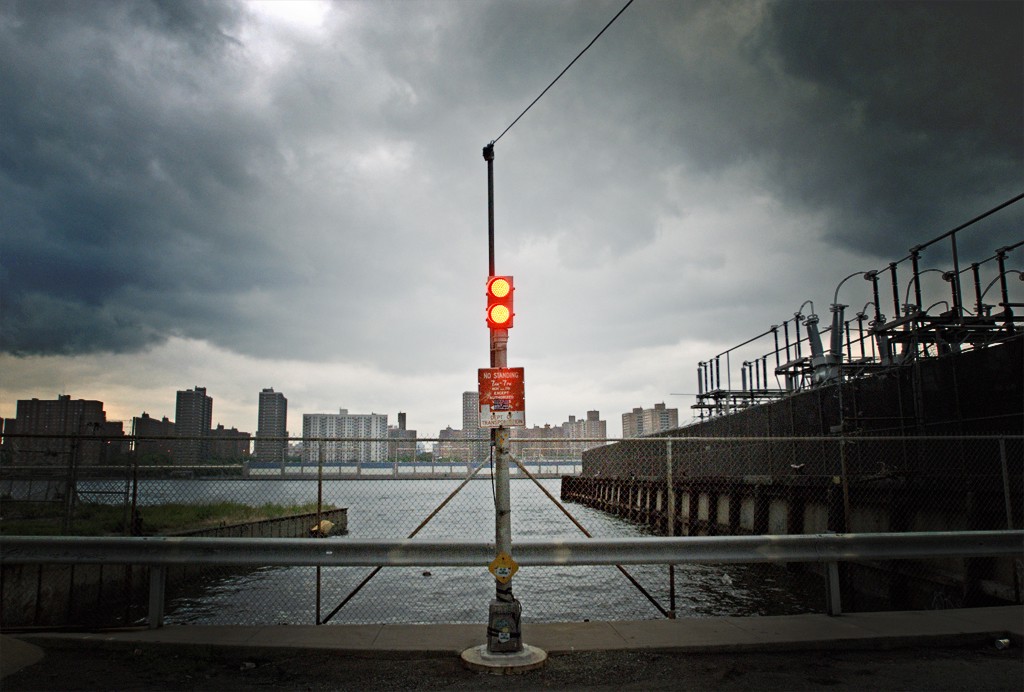
There is a new Loscil album coming out in November is the only good news I have for you today. I wish I had something else but I guess we’re gonna grind it out until Friday and pray that next week is better. (It won’t be.) Anyway, enjoy.
New York City, September 6, 2016

★★★ Neither a quick, umbrella-raising shower nor a brief burst of sun could deflect the morning for long from its flat-skied, breezy mildness. The afternoon was a little darker. Another little spell of rain had made people pause under the scaffold, but as they stood and looked out, a passerby was already lowering his umbrella again. The drops had not even broken through the tree canopy on the way to the Park. The children ran around the playground through spells of deeper gloom, but the only wet came from the sprinklers, causing the sand to adhere to the four-year-old’s shoes. The clouds broke apart in places and drifted, and a full opening appeared in the west. Ribbons of glory streamed up under the edge, then scattered and darkened into a glowing scarlet fog.

